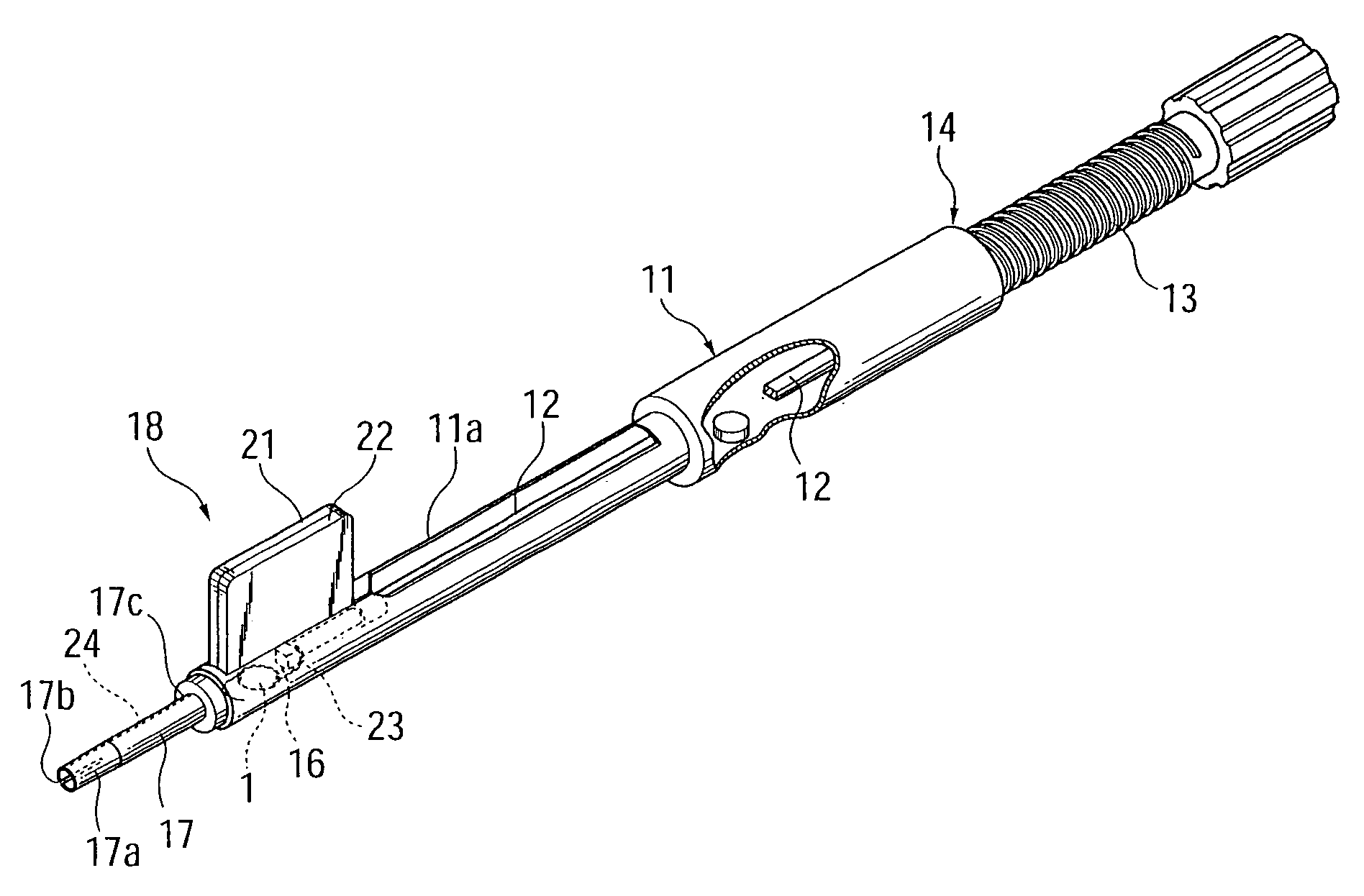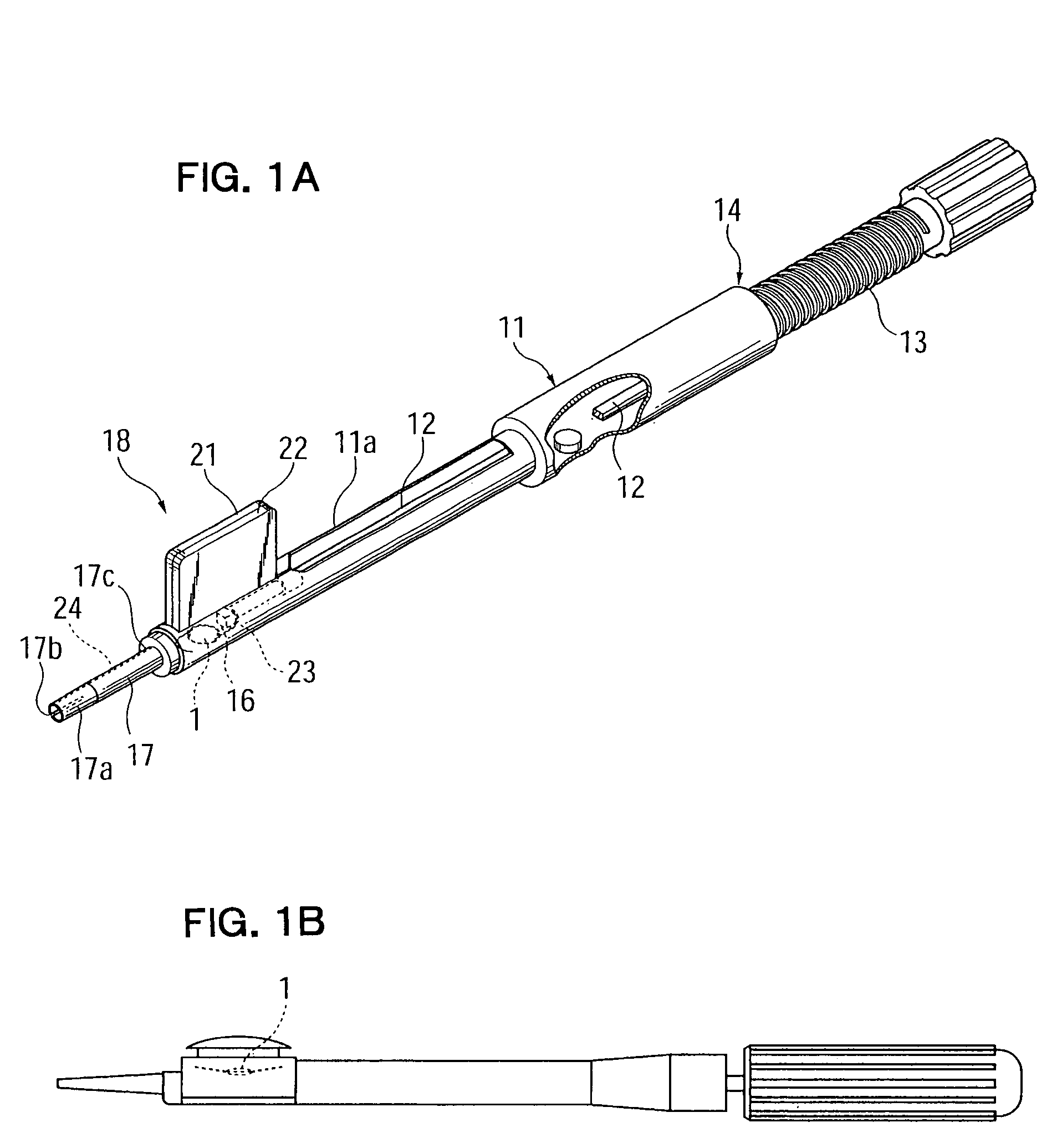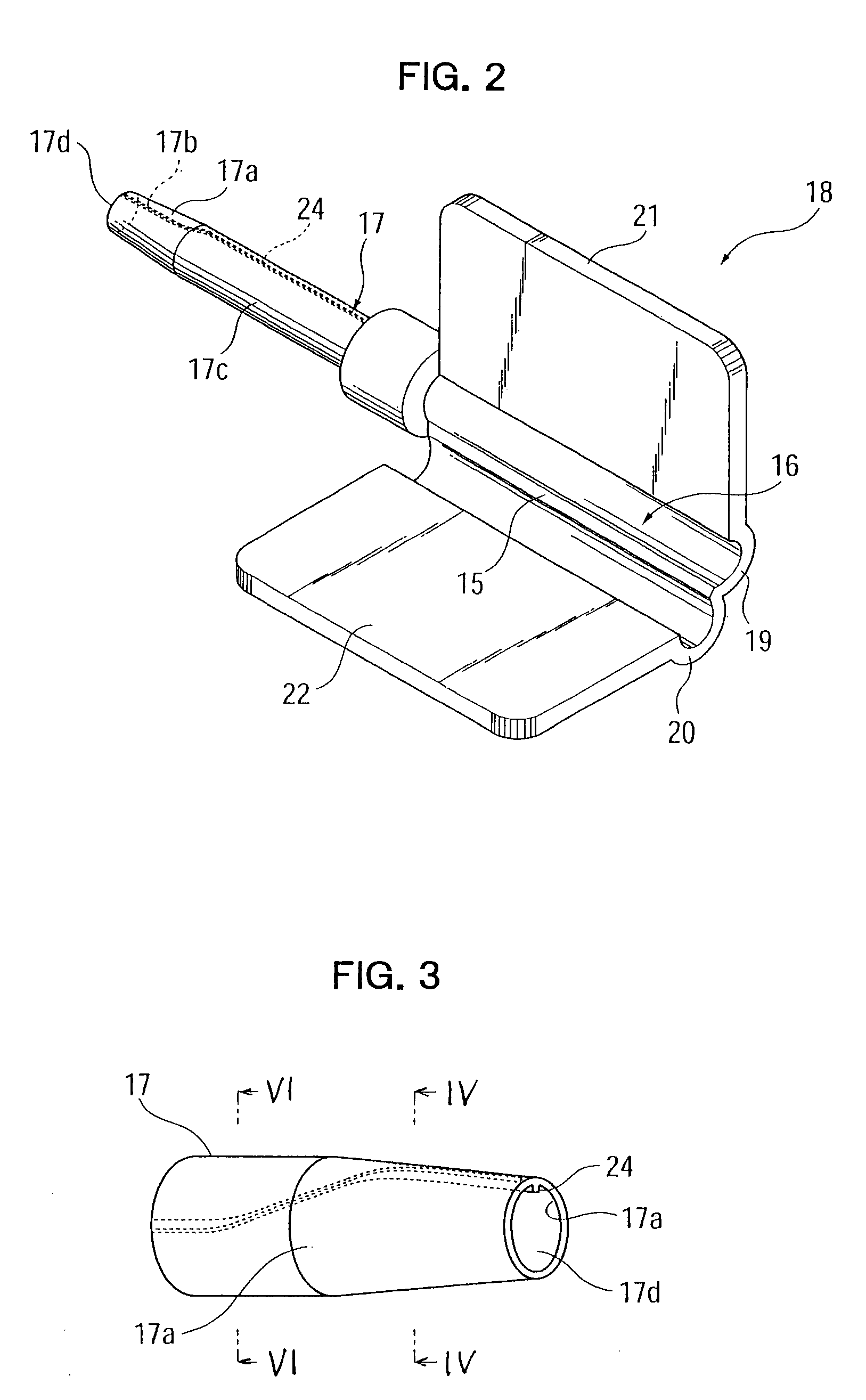Insertion device for an intraocular lens
a technology of intraocular lens and insertion device, which is applied in the field of insertion device for deformable intraocular lens, can solve the problems of inconvenient insertion the intraocular lens fails to project from the insertion end portion of the insertion tube in a desired condition, and the difficulty of controlling the insertion of the intraocular lens with consistent repeatability, etc., to achieve stable insertion speed, high skill level, and safer procedure of inserting
- Summary
- Abstract
- Description
- Claims
- Application Information
AI Technical Summary
Benefits of technology
Problems solved by technology
Method used
Image
Examples
first embodiment
[0045]An intraocular-lens insertion device according to a first embodiment of the present invention will be described with reference to FIG. 1A.
[0046]As shown in FIG. 1A, the intraocular-lens insertion device of the present embodiment includes a generally cylindrical, tubular device body 11; a push rod 12 fitted into the device body 11; a push-out mechanism 14 including a male-thread shaft 13 in screw-engagement with a female thread (not shown) formed on the inner wall surface of the device body 11; and an enclosing member 18, which has a lens receiving section 16 having a hinge portion 15, and an insertion tube 17 projecting forward from the lens receiving section 16.
[0047]An attachment groove 11a is formed in an upper portion of a tip end portion of the device body 11. The enclosing member 18 is loaded into the device body 11 via the groove 11a. The push rod 12 is rotatably connected, at its one end, to the male-thread shaft 13 and is supported by the device body 11 in such a mann...
second embodiment
[0062]FIG. 7 shows the guide portion 24 of an intraocular-lens insertion device according to a second embodiment of the present invention.
[0063]As shown in FIG. 7, the guide portion 24 is a groove 24c that is formed on the inner wall surface of the insertion tube 17. The groove 24c faces the axis of the insertion tube 17; i.e., the insertion tube axis, and axially extends. As in the case of the first embodiment, in the transitional region between the base end portion 17c and the insertion end portion 17a, the groove 24c changes its position rotationally about the axis of the insertion tube 17 by a predetermined angle. The intraocular lens 1 moves along the groove 24c while being guided by the groove 24c by virtue of its restoration force, and thus can be moved rotationally about the insertion tube axis. The intraocular-lens insertion device of the second embodiment is effectively used, particularly with a thick intraocular lens.
third embodiment
[0064]FIG. 8 shows the guide portion 24 of an intraocular-lens insertion device according to a third embodiment of the present invention.
[0065]As shown in FIG. 8, the guide portion 24 is a groove 24d that is formed in the insertion tube 17 in such a manner as to extend from the inner wall surface to the outer wall surface thereof, and axially extends. As in the case of the first embodiment, in the transitional region between the base end portion 17c and the insertion end portion 17a, the groove 24d changes its position rotationally about the axis of the insertion tube 17 by a predetermined angle. The intraocular lens 1 moves along the groove 24d while its peripheral edge is guided by the groove 24d, and thus can be moved rotationally about the insertion tube axis. The intraocular-lens insertion device of the third embodiment is effectively used, particularly with a thin intraocular lens.
PUM
 Login to View More
Login to View More Abstract
Description
Claims
Application Information
 Login to View More
Login to View More - R&D
- Intellectual Property
- Life Sciences
- Materials
- Tech Scout
- Unparalleled Data Quality
- Higher Quality Content
- 60% Fewer Hallucinations
Browse by: Latest US Patents, China's latest patents, Technical Efficacy Thesaurus, Application Domain, Technology Topic, Popular Technical Reports.
© 2025 PatSnap. All rights reserved.Legal|Privacy policy|Modern Slavery Act Transparency Statement|Sitemap|About US| Contact US: help@patsnap.com



